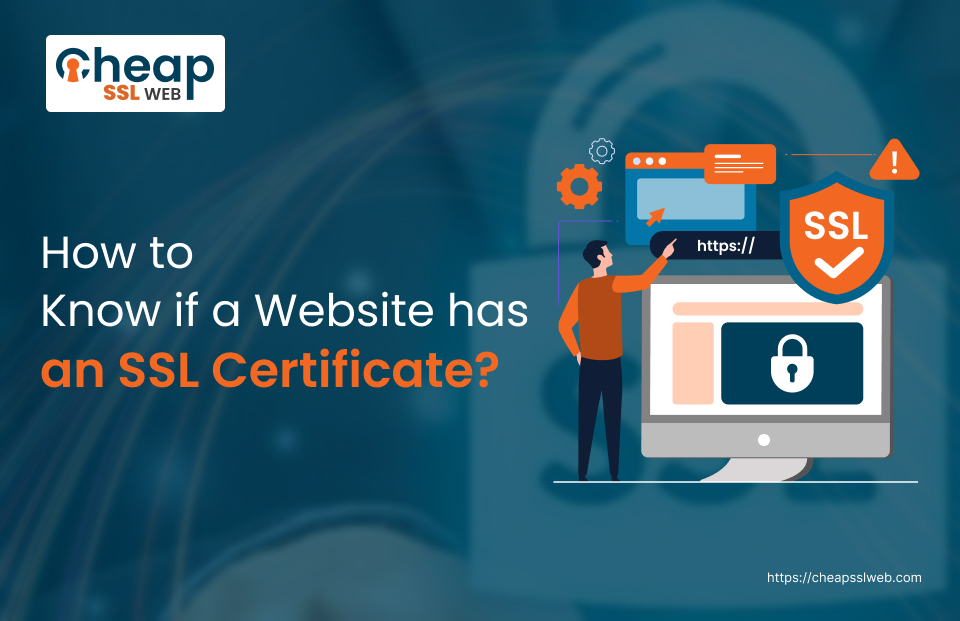How to Know if a Website has an SSL Certificate or Not?

What is SSL Certificate?
SSL certificate is also a digital certificate that verifies a website identity and forms an encrypted connection between a web server and a web browser.
Hence, by using the Secure Sockets Layer (SSL) or Transport Sockets Layer (TLS) protocols, the link becomes encrypted and, therefore, sensitive data such as passwords, credit card numbers and personal information is securely transmitted between the website and its users.
SSL certificates are given out by trusted organizations called certificate authorities (CAs) which among other things verify the identity of the website owner and the domain name for which the certificate has been issued.
Recommended: What is an SSL Certificate? Purpose, Benefits & Use Cases of SSL Certificates
The presence of SSL certificates is characterized by the emergence of the HTTPS in the URL and a padlock icon appearing in the URL address bar, which causes a trust with those who visit the website, all this reassures.
SSL connections play an important particular role in protecting information, such as passwords, credit card numbers, and personal details, and are a must-have feature for websites that gather sensitive data from users.
How do you know If you have an SSL Certificate?
There are different ways for the website to check whether it has an SSL certificate. The easiest way to do this is to examine the website’s URL. If it begins with “https: the site is encrypted.
For additional security purpose; you may click on the padlock which is located in the address bar at the top. This activity will present the site with the SSL certificate details which are extensive and contain the website’s security credentials. This makes you feel safe about how you browse and that your personal information remains safe.
SSL protocol means that data with that page is safe with SSL/TLS encryption and identification. SSL should be ensured to be used on any website which sensitive data may be exchanged with. Sites without HTTPS are open to hacking by hackers or by ID fraudsters or may be scamming themselves.
Digital certificates are a digital mark of identity for people, computers, and any other relevant entity in a certain network. With the escalated use of both private and public networks to transmit confidential data and process critical transactions, trust in certifying identities has probably become a demand rather than a need.
Recommended: Digital Signature vs Digital Certificate
Contrary to the widespread usage of “SSL”, it is in fact correct to use TLS (Transport Layer Security) instead, as this can offer more advanced encryption and much needed security features. Yet the phrase “SSL certificate” is the world common description of any kind of certificate that secures online connections, which may be SSL protocol based or not.
How to View SSL Certificate in Browser?
To view SSL Certificate in chrome or firefox you need to follow these steps:
On Chrome click the padlock icon that you find in the address bar of the website you are visiting. In the pop-up window, choose “Certificate (Valiated)”.
Check out the “Valid From and Valid To” data to make sure the SSL certificate is not expired. The information that will be covered will be the certificate’s function, which entity it’s allotted to, who issued it, and its expiration date.
In Firefox, the process is also the same. However, for non-EV certificates, the display will primarily show the issuing Certificate Authority (CA) under the “Verified by:“.
Moving forward, the event organizer encouraged everyone in the audience to explore resources offered in the community and to support businesses like the one they just visited. The link “More Information” is included for more detailed content.
To conclude, making sure that the https version is present together with an SSL certificate is an essential measure in assuring the security of a website.
By looking for “https:// Moreover, for you to confirm a website has a valid SSL certificate and that the connection is secure, you can do two things: one is to check the URL for the padlock icon, and two is to click on the padlock icon or use an SSL checker tool.
How to Verify SSL Certificates in Windows?
SSL Certificate verifying is moving by some stages.Here’s a detailed guide:
Open Internet Options: From the Start menu, double-click the Control Panel, then Network and Internet, and then Internet Options.
Security Tab: Choose the internet options in the window where you select the security tab.
Trusted Sites: You will locate the Trusted Sites button and click on it, then click on the Sites button. Here, you can list the websites that belong to SSL certificates which you wish to check.
Add Websites: Type the website address (URL) in this field and click Add, or Add this website to the zone. Take this part again and again for all websites you want to add.
Customize Level: And back up with the Security tab press on the Custom level button. Activating this, the Security Settings window will appear.
Security Settings: Proceed down to the “Miscellaneous” section and locate “(Commando Client Certificate NOT SELECTED).” Make sure the configuration is set to “Disable” or “Prompt” for better security.
Check SSL Certificate: Hit the browser button, type in the address of one of the trusted sites you authorized, then hit the Return button. On losing the site page, you should click the padlock icon present in the address line for SSL certificate details verification.
View Certificate Details: In the Certificate window, you will be able to review information relating to the certificate issuer (CA), its expiration date and details concerning the issuance process. Ensure that you are provided with the up-to-date data that you would anticipate for a connection that is secure.
Additional Verification: Moreover, some other certificate verification tools and services will help in much deeper checks of the certificates.
How to Check the SSL Information of Websites in Firefox, Chrome, Edge and Internet Explorer?
To check the SSL information of websites in different browsers, follow these steps:
Check SSL on Firefox
Use a Site with SSL Certificate and click on the padlock icon from the upper address bar.
On the pop-up screen, hit on the word “Connection secure” and opt for “More Information”
Under the “Security” tab, click on the line “View Certificate“.
Here the SSL particulars like organization, issuer, unit, validity, and fingerprints will be put up in another screen.
Check SSL on Chrome
According to Firefox, do the same as you did at a secure site and press on the padlock icon.
A new window will appear in your browser and press on “Connection is secure.”
And then “Certificate is valid“.
The information related to SSL, including the issuer, common name, validity, and fingerprints, will be displayed.
Check SSL on Edge
SSL – secure websites, open Microsoft Edge and click the green padlock icon that appears on the left.
On top of the window, next to the secure connection sign, there is a “Certificate” button, press on it and certificate info should be displayed on a certificate viewer screen.
Check SSL on Internet Explorer
Open Internet Explorer and use the Padlock option at the SSL website to assess it.
In the pop-up window, select “View Certificates” to establish a network, for example, name of the issuer, common name and, of course, expiration and validity date.
These moves permit you to see SSL information of websites upon which communication is related securely and nourished by the trusted certificate authority.
Recommended: How to Check TLS/SSL Certificate Expiration Date?
Conclusion
In order to make sure your website is being secured and can be trusted by visitors, putting the SSL certificate on your website becomes necessary.
If you want to see if the website is secured by SSL, all you need to do is to look for the lock icon in the address bar of your browser. TLS, if the website uses it one-way, means only the site’s server verifies as authenticated.
As your security is enhanced by SSL, try to implement the version which requires authentication from both client and server called two-way SSL.
Keeping your website and visitors’ information secure is our priority. All data transmissions should be SSL-encrypted. Through CheapSSLWEB, you can get SSL certificates at discounted prices and even get access to helpful resources that would enable you to easily implement SSL on your website. Starts at Just $2.99/Yr!

